Science news and science writing is increasingly popular. There are increasing numbers of people getting into science, which is great. But science is a huge field, with many different disciplines and areas, all of which can go into quite painstaking detail. Obviously there’s a lot to talk about, which can prove daunting to the newly interested, so good science writing is important.
However, science and science news/reporting/writing is the work of humans, and humans are rarely 100% logical. So, to step into the world of science is to step into years/decades/centuries of disputes, controversies, unfamiliar habits, power-plays, strange politics and countless other things that manifest in science articles and could befuddle the unwary reader. What can we do about this?
One option is to adopt an approach from the world of film. Every film released to the public comes with a classification, to warn potential viewers of the type of content to expect without spoiling the actual thing itself, so the viewer can go in prepared. These classifications now come with explanations, like “contains mild peril”. Wouldn’t it be useful to adopt something similar for science articles, to give newcomers some grasp of what they’re looking at? So here’s a potential classification system for science writing. It’s a bit more complex admittedly, and unlike films, multiple classifications can be applied to a single piece. How like science, to be so uncertain.
[Disclaimer: this isn’t intended as a jibe at other science writers, nearly all of the things discussed below are applicable to posts from this blog many times over, and almost certainly will be again in future]
Axe Grinding
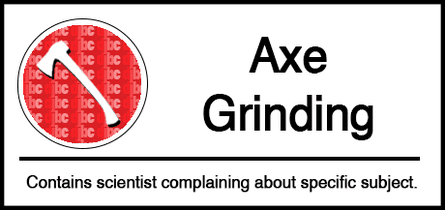
Sometimes you may stumble upon an article or blogpost about something that, as far as you’re aware, is reasonably well established. The efficacy of SSRIs, string theory, mankind’s evolutionary origins, that sort of thing. However, no matter how established the subject, it’s guaranteed there’ll be someone somewhere who disagrees with it. If it’s a particular bugbear of theirs, they’ll take any opportunity they can to rail against it, such as by writing articles about it.
Often, such an approach is entirely valid. Much that people accept as based on established principles really isn’t, no matter how important, eg government drug policy. But sometimes the writer can lose objectivity or effectiveness, and it ends up reading like someone yelling at pigeons (albeit in a surprisingly articulate manner).
Soapbox
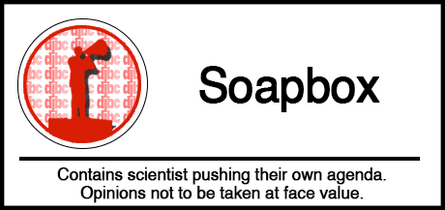
Soapboxing is similar to Axe Grinding. The writer is focusing on an issue important to them. Unlike Axe Grinding, it’s more an attempt to draw attention to an issue or idea that the writer considers important and does not get the publicity/acceptance they feel it merits, so is writing an article to try and change this.
There are many possible motivations for this; some noble, others less so. The writer may genuinely believe that an important issue is being overlooked to the detriment of many. Or it may be that it’s an idea or concept that they came up with or that benefits them in some way, and are promoting it more out of self-interest. Like Axe Grinding, you can expect many pieces on the same subject from Soapboxing authors.
Wild Extrapolation
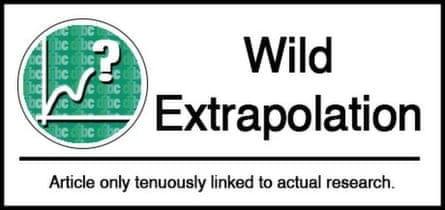
Most scientific experiments are actually quite specific, eg what one specific protein does in one specific type of bacterium. But in the modern media, it’s vitally important that a news story or piece get as much attention as possible, and this is often achieved by highlighting the consequences that could affect the potential reader. That’s how a study into mouse diets during pregnancy suddenly becomes an alarmist piece about human mothers potentially harming their babies. Or a small study showing a minor increase in carcinogen activity in-vitro becomes “THING CAUSES CANCER!”
These are more likely to be mainstream press articles, which ignore the “small thing definitely happened” story to focus on the “BIG THING MAY POSSIBLY HAPPEN MAYBE!” one.
Provocative Title
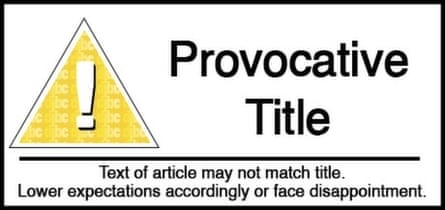
The Provocative Title is a similar approach to Wild Extrapolation, but is more constrained. It’s still typically a mainstream article intended to grab attention, and does so by using an eye-catching title that isn’t necessarily backed up by the text itself. The title may be based on an offhand phrase or comment by someone involved in the study, usually included toward the end of the piece to “justify” the title. But overall, there’s a notable disparity between the headline and the body of the piece, so you might start reading something about a study that reports a newly observed minor mutation in a known virus when the title promised you “Killer disease discovered could wipe out humanity!”
Impenetrable
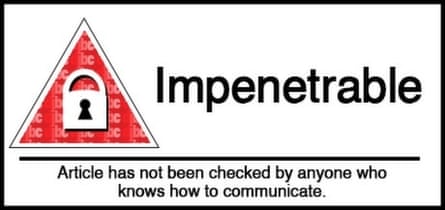
Communicating science to other scientists is a totally different skill to communicating it to non-scientists. The latter has an entire discipline dedicated to it. Most scientists opt to focus on their research, rather than tell people about it. This is fair enough; it’s what they’re paid for after all. However, circumstances may occur that end up with such career scientists writing a piece for public consumption, eg they may be the leading authority in an area that is suddenly of interest. Whatever the reason, we end up with a piece written by an experienced scientist who has no experience of communicating with people, and thus is crammed with jargon, unfamiliar terms, painstaking explanation, and so on. It’s not “wrong”, but does not make for easy reading.
The temptation to run it through Google translator can be strong.
Uninformed
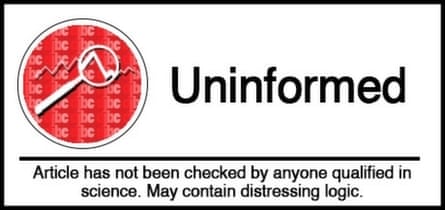
The polar opposite of the Impenetrable article, an Uninformed piece hasn’t had anyone with any actual science knowledge look at it before publication. A more mainstream publication may want an item about a science-based thing that is currently or potentially quite popular, but doesn’t actually have any scientists on the staff (science is nowhere near popular enough for this to be a totally unlikely scenario).
So the piece ends up being written by someone who doesn’t really understand what they’re talking about. And usually, it shows.
False Balance

A False Balance piece may be well-intentioned, but is potentially more harmful than a straightforward Uninformed piece. The writer may be aware that a scientific subject is important, but they are also aware that there are those who dispute the claims underpinning it. However, the author either lacks the understanding to evaluate the merit of both positions, or hasn’t the resources to deal with the inevitable criticism of ignoring the detractors.
The result is a piece that treats the claims of those opposed to the scientific subject as equally credible to those that support it, despite the former lacking any real evidence. It can be quite a distressing read, especially as the views of those opposed are usually presented without criticism at the end of the piece, creating a “fallen at the last hurdle” feeling.
Reheated PR

Many organisations or institutes want media attention for their latest discovery or product, so send press releases to mainstream media organisations. The press release emphasises the importance of what they’re trying to promote, but is hardly an impartial, thorough report of the subject matter.
Sadly, many major platforms will essentially just publish the PR as is, making it look like it’s an actual piece of science news, rather than promotional material written by those who benefit from it. You can usually spot this as the wording is basically the same in all articles covering the “story”.
Shoehorn
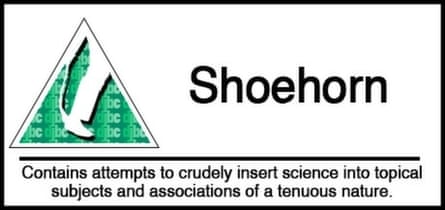
If an author wants to write about a particular area of science but doesn’t really know how to get people interested in it, one common approach is to discuss it in the context of a subject that’s currently popular or topical.
This can be an entirely relevant and valid approach, as pretty much anything in the news has aspects that can be explained by science. But it can go too far, and you end up with writers awkwardly inserting science matters into popular subjects where they don’t really belong, making the whole thing look somewhat cynical and baffling, like those ads where women seem to achieve sexual climax when using shampoo.
Condescending
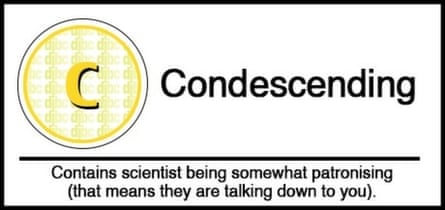
Science stories are a bit difficult to get right. You want to be accurate and thorough, but you know you’re not writing for people in the field so they won’t have the vocabulary or experience needed for understanding detailed explanations, so it needs to be written in clear, decipherable language. Unfortunately, some scientists interpret that as “everyone who reads this is a small child of below-average intelligence”, and ends up producing a piece that assumed the reader knows literally nothing and is liable to get upset whenever they see a word they don’t understand.
It’s not that the piece is “wrong”, it’s just that it’s very grating to read, like listening to a pub bore explaining to you why you’re wrong about a film you like.
Cargo Cult
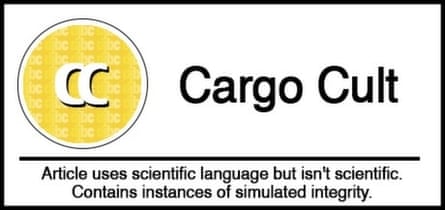
Some articles are written to look and read just like science articles, but aren’t. Things like alternative medicine, anti-vaccination campaigns, climate-change denial and more, these want to be seen as credible scientific positions but lack the evidence for this. One alternative approach is to act like a legitimate science, and this can sometimes manifest in producing articles that look just like scientific ones.
They contain complex terms (usually “quantum”), adopt a relatively neutral tone, contain graphs and figures, quotes from “researchers”, but a bit of further digging reveals this to be a facade, like Hannibal Lecter wearing the face of an unsuspecting guard (only not quite so gruesome).
Niche Concern
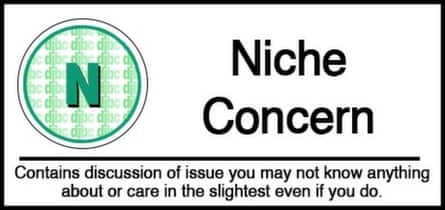
Science being such a big subject involving thousands of different organisations, it’s inevitable that some issues will be more relevant to certain groups and organisations. People affected by an issue may care about it deeply, and take every opportunity to highlight or address it, especially if there is an opposing opinion on it held by others in the field. This can lead to many successive articles and pieces offering stances and solutions and discussions and analysis of the issue.
However, should a casual reader not familiar with the issue stumble upon the piece, it can totally alienate them. Unfamiliar names and terms and events being discussed as if they’re the most crucial matter ever can leave the reader utterly baffled, like a traveller who’s just wandered into a blazing argument in a rural village pub. Enter at your own risk.
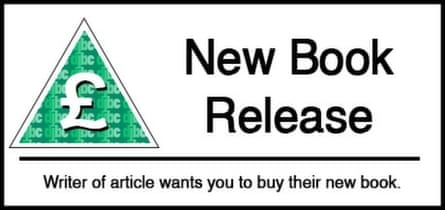
The writer of the article has written a book. The article you’re reading is intended to make you interested in buying and reading this book.
Nothing wrong with this per se. Writing a book takes a considerable amount of time and effort so of course the author wants to promote it. And with science writers, a book gives them much more space and scope to really elaborate on an important subject, which they will only be able to address briefly in the article about it.
It can cross the line into deeply cynical territory though. The author may be rehashing old arguments, stirring harmful controversies or adopting dubious positions and writing about them, purely to generate some attention for their book. Naming no names, obviously … *cough*
Link Fest

A Link Fest isn’t an article per se, it’s more a gateway to other articles. The author has collected a bunch of pieces that they think are worthy of attention and wants to get their regular readers to check them out too.
Nothing wrong with doing this, but if you were hoping to spend 10 minutes reading these it can actually end up being more like 2 hours.
Dean Burnett is on Twitter, as @garwboy. His account would probably be classified as “banal”.
All images by Barry Welch, who displays his Photoshop wizardry also via Twitter as @quantumpirate
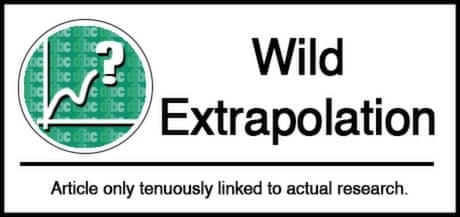
Comments (…)
Sign in or create your Guardian account to join the discussion